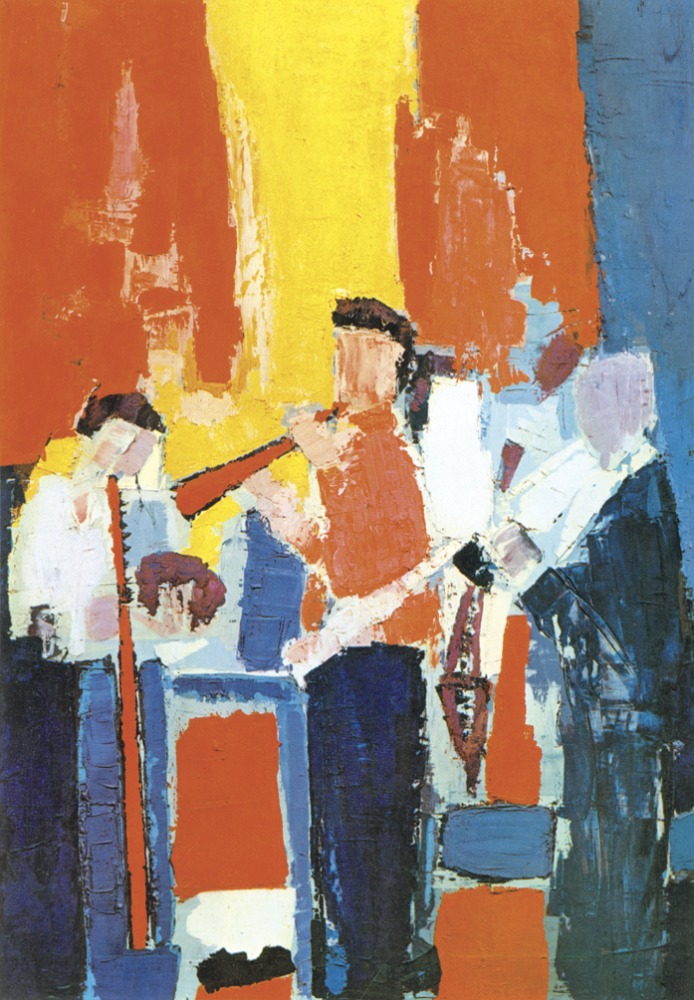New School of Paris

New School of Paris
The New Paris School of Painting, emerging in the post-World War II era, represents an international generation of artists who both continued and evolved the traditions of the original Paris School. This period marked a significant phase in art history, where Paris remained a central hub for modern artists from various European countries. The term "School of Paris" is quite broad, covering modern artists working in the French capital both between the wars and after.
This school included artists not originally from Paris or even France. Many discovered their artistic identity either through academic education in Paris or by living and working amongst peers who were exploring similar aesthetic themes. The post-World War II period saw artists like Sam Francis, Serge Charchoune, Jean Tinguely, Jesús Rafael Soto, Victor Vasarely, and Jean-Paul Riopelle, among others, contributing to the diverse and rich tapestry of this artistic movement.
The School of Paris after World War II was characterized by its broad range of styles, including but not limited to abstract expressionism, lyrical abstraction, and other forms of modernist abstraction. These styles were marked by a departure from traditional forms and an emphasis on innovation and individual expression. Artists like Nicolas de Staël and Pierre Soulages were noteworthy for their unique approaches to abstraction. Manessier and Singier, for instance, showed profound differences in their artistic methods. Manessier's work often attempted to capture religious and spiritual concepts in non-figural, abstract forms. In contrast, Soulages focused more on the act of painting and printmaking, emphasizing the process of artistic creation.
Exhibitions like the School of Paris: European Abstraction Post World War II at the Bechtler Museum of Modern Art showcased these artists' works, providing a glimpse into the diverse range of artistic expressions that characterized this period. This exhibition was significant for highlighting the contributions of these artists, many of whom were not as well-known in American museums.
The New Paris School of Painting thus stands as a testament to the enduring influence of Paris as a center for artistic innovation and creativity, even in the years following the turmoil of World War II.
If the intriguing era of the New Paris School of Painting captivates you, and you are eager to delve deeper into this significant post-World War II art movement, we warmly invite you to become a part of our community. By subscribing to our newsletter, you'll gain access to a world of exclusive insights into both the art and antiques realms. Our updates will keep you informed about the latest discoveries, exhibitions, and special sales events related to the New Paris School of Painting and other influential art movements. Enhance your understanding and appreciation of modern art - subscribe today and join a community of like-minded art aficionados.
| Country: | France |
|---|---|
| Start of the period: | 1946 |
| End of the period: | 1960 |